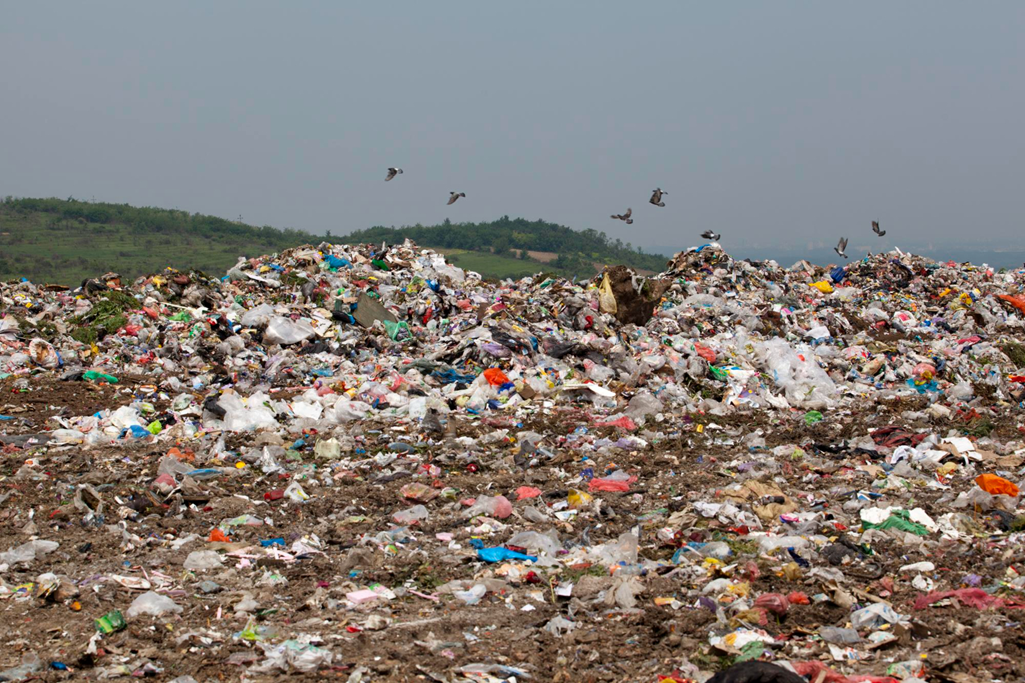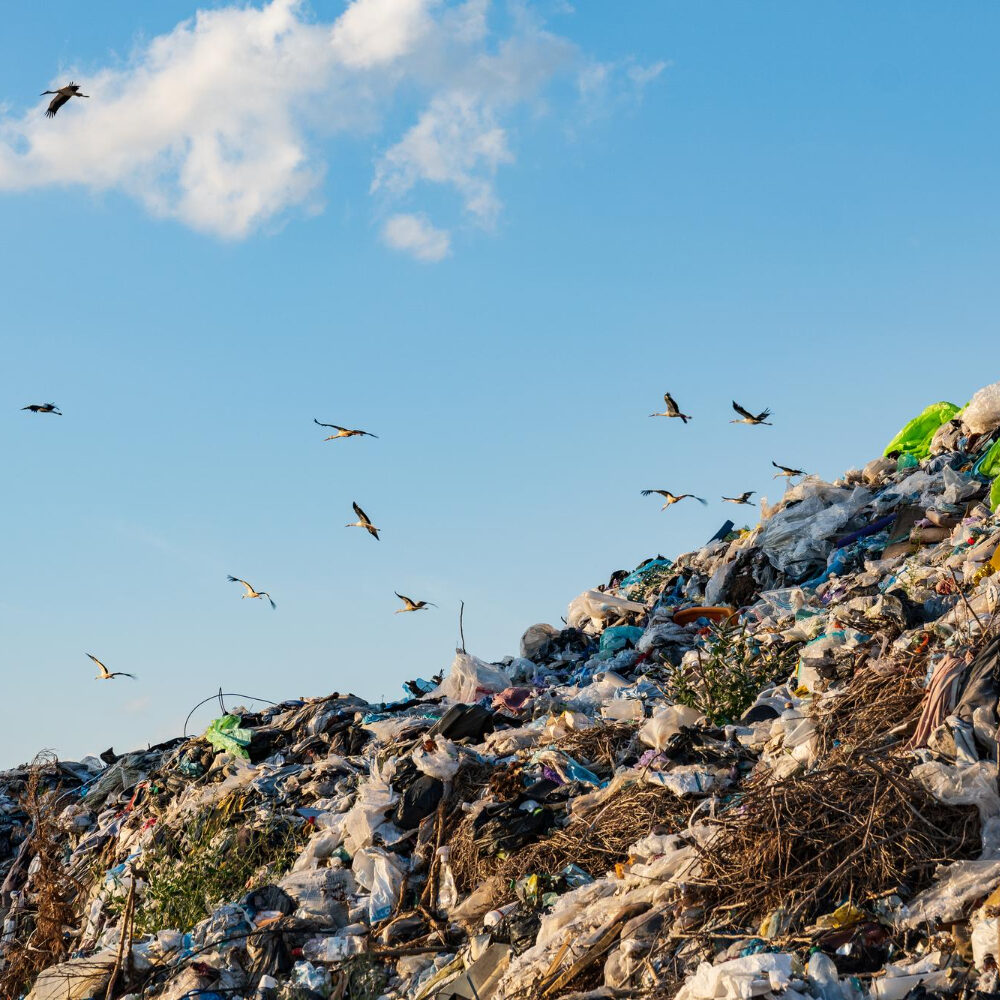The hazards in landfills and the promise of Waste-to-Energy

Landfills have long been considered the default solution for waste disposal. But as we confront the environmental challenges of the 21st century, dump sites’ negative consequences on the environment can no longer be ignored.
In this article we analyse the adverse impact of landfills, and make a compelling case for Waste-to-Energy (WtE) technologies as a more sustainable and environmentally friendly alternative.
- Climate hazards of landfills: The decomposition of organic waste is what primarily makes landfills a significant climate hazard. When organic materials break down, they produce methane, a potent greenhouse gas approximately 28 times more potent than carbon dioxide over a 100-year period.
Twenty per cent of all methane emissions come from the waste sector – the vast majority of them is produced in landfills, which makes them an environmental threat.
A landmark March 2024 report exposed the extent of landfills-generated methane in the United States, raising the alarm about dump sites’ contribution to climate change.
In the study, aircraft equipped with innovative remote sensing technology flew over hundreds of landfills across the United States to monitor their emissions between 2016 and 2022. Scientists’ goal was to accurately assess the impact of waste methane, and use the data to drive policymakers’ efforts to lower global emissions.
The research – co-conducted by Nasa, non-profit Carbon Mapper and partners from the academic and government sector – aimed at identifying leaks, reduce methane emissions in landfills, and lower toxic emissions at the source.
The information collected onboard the aircraft showed higher levels of methane emissions than previously reported, highlighting how earlier surveys of landfill emissions had failed to precisely measure the amount of pollution produced.United Nations Economic Commission for Europe
WtE, on the other hand, diverts waste from dumpsites, lowering methane-producing materials, thus contributing to the fight against global warming.
The United Nation’s Economic Commission for Europe. In a 30 August 2022 , the UN body defined WtE as “the most sustainable solution for non-recyclable waste as it recovers energy and materials while providing an alternative to highly polluting landfills and waste exports.”
- Water and groundwater contamination: Improperly managed landfills can result in waste escaping into nearby water bodies, posing a threat to aquatic ecosystems and water quality. This runoff from landfills may carry pollutants, chemicals, and harmful substances into rivers and oceans, leading to long-term environmental damage.
At the same time, landfills can also contaminate groundwater, posing further risks to both human health and the environment. Rainwater can percolate through the waste, leaching harmful chemicals and pollutants into the soil. This leachate, laden with toxins, can infiltrate groundwater, with negative consequences on water resources and on ecosystems. A recent UK government research found that landfills in England were leaking toxic per- and polyfluoroalkyl substances (PFAS), also known as ‘forever chemicals’ at levels up to 260 times higher than those deemed safe to consume. PFAS may be responsible for a wide range of health issues, from liver and thyroid disease, to cancer, infertility and obesity.
In contrast, by decreasing the volume of waste that ends up in landfills, WtE facilities reduce the potential for leachate, prevent groundwater contamination and the release of toxic materials.
- Land use, odour pollution, and aesthetic impact: Landfills occupy vast areas of land, often in proximity to residential communities. Dump sites’ aesthetic impact is considerable, with the presence of large mounds of waste affecting property values and quality of life for nearby residents.
In addition, landfills are notorious for emitting unpleasant odours released from the decomposition of waste, creating a significant nuisance for nearby communities.
Waste-to-Energy facilities, on the other hand, can be designed to occupy smaller footprints and, with the right architectural touch, can even become city landmarks, as effective in treating waste as pleasant to the eye.
Consider Vienna’s Spittelau incinerator. With its multi-coloured walls, imaginative façade, and shimmering chimney, the facility stands out as a modern-day, secular cathedral. Masterfully created by artist Friedensreich Hundertwasser, Spittelau hardly gives away its burning secret, and can easily be mistaken for a contemporary art museum.
A WtE plant can also serve the community while managing waste – a perfect example is Copenhill, the WtE facility that since 2017 is redefining Copenhagen’s skyline. Standing at 100 metres high, Copenhill is an unlikely mountain in the middle of the otherwise flat Danish capital. At a closer inspection, the facility doubles as a skiing dry slope, a climbing wall (the world’s tallest), a rooftop café, and a running and trekking ground. All while providing electricity to 80,000 households and district heating to 90,000 apartments. Who knew that WtE plants could be multitasking?
- Limited resource recovery:Landfills are essentially repositories for discarded materials, with limited emphasis on resource recovery.
In contrast, Waste-to-Energy technologies prioritise extracting value from waste. The advanced processes involved not only reduce the volume of garbage, but also allow for the recovery of valuable materials, contributing to a more circular and sustainable economy.
Ashes and residues resulting from WtE plants’ combustion contain valuable metals and minerals that are recovered during the process: from copper to silicon, calcium, iron, aluminium, steel, sodium, magnesium, potassium, zinc, barium, lead, and even silver and gold. Once extracted, these metals and materials are put back into the system and used for different purposes such as road construction, concrete manufacturing, and many other applications.
- Air pollution and climate impact: Landfills contribute to air pollution through the release of harmful materials such as volatile organic compounds (VOCs) and particulate matter, which have adverse effects on air quality, human health, and the environment.
WtE plants, instead, have a lower climate impact and meet stringent environmental standards. When properly designed and operated, WtE facilities feature controlled combustion processes that can minimise air emissions, and mitigate air quality. In fact, the emissions produced by WtE plants are among the lowest in the EU industry.
In recent years, ambitious EU climate goals have been championing a further reduction of toxic emissions by delivering momentum to the Carbon Capture, Utilisation and Storage (CCUS) technique.
CCUS involves the capture of CO2 from industrial facilities and hard-to-abate sectors. Many CCUS projects in the sector are taking off in Europe, and promise to make the sector carbon neutral or even carbon negative.
- Addressing the growing waste crisis:Prompted by a global demographic increase, mass consumption, and products’ shorter lifespan, waste volume is reaching unprecedented levels. A February 2024 Eurostat study put this trend into number: the analysis and highlights some worrisome trends at national level. In Croatia, for example, the annual waste production increased by 117,7 %, jumping from 220 kilos per person in 1995 to 478 kilos in 2022. In Czechia, the yearly amount of waste grew by 88,7%, from 302 kilos per person in 1995 to 570 in 2022.
Landfills are struggling to cope with this surge, leading to the proliferation of unsustainable waste disposal practices. However, over the past three decades, landfilling’s popularity has decreased as alternative waste management methods took hold instead. From 1995 to 2022, incineration grew by 98%, recycling by 196% and composting by 203%, Eurostat data show.
This drastic shift has been steadily driven by the EU, for which and should be limited to the necessary minimum.”
Starting from the 1990s, a series of EU laws have asked EU member states to progressively reduce the amount of rubbish they send to landfills, leaving them the choice between Waste-to-Energy, recycling, and composting, depending on their respective waste streams.


